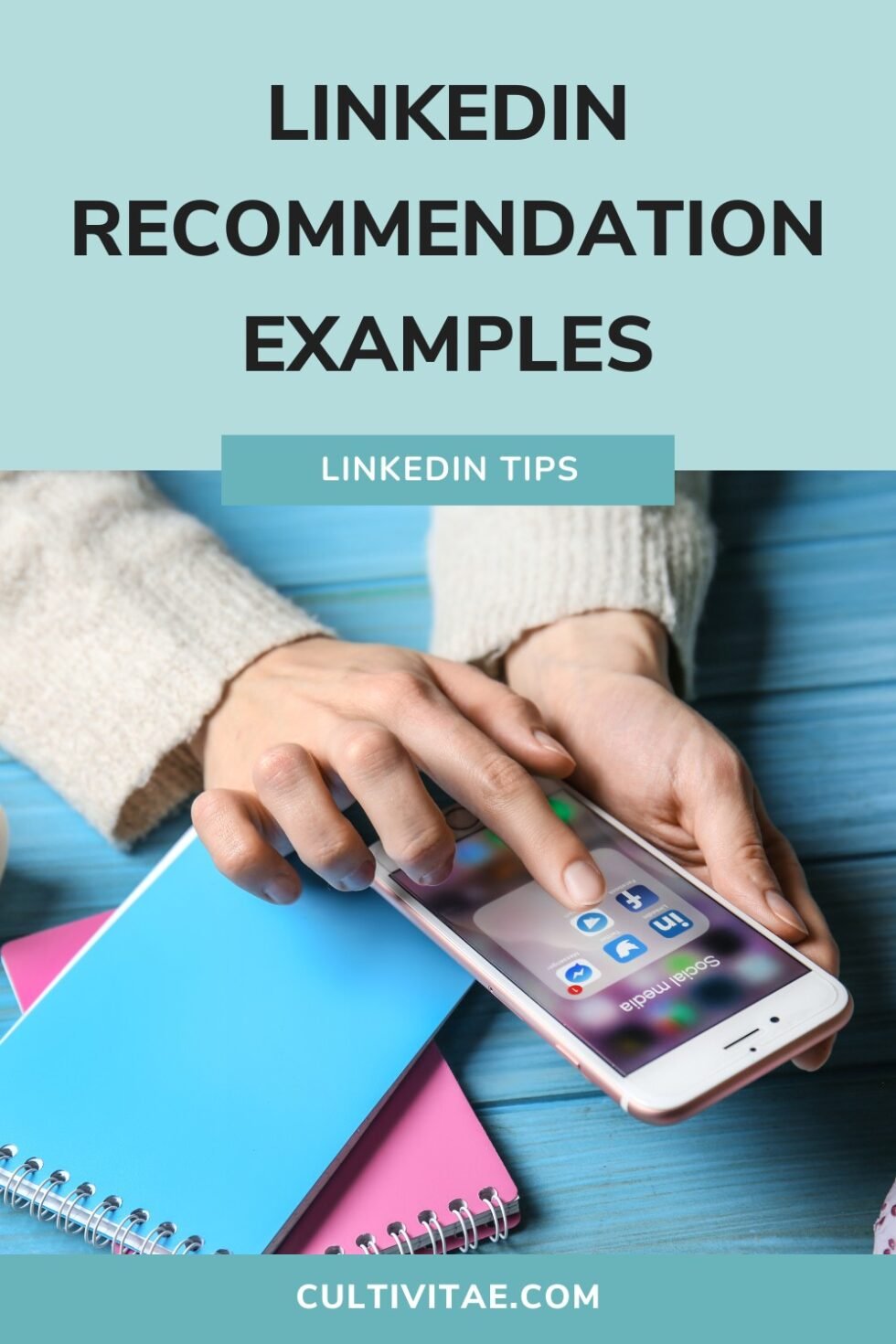If you’re looking to elevate your LinkedIn profile, recommendations are your secret weapon! These personal endorsements from colleagues, clients, or mentors showcase your skills and give potential employers a glimpse into your professional relationships. In a world where first impressions are often digital, a glowing recommendation can set you apart from the competition. Ready to dive into the importance of these endorsements? Let’s explore!
Why Recommendations Matter for Your LinkedIn Profile

Recommendations on LinkedIn are more than just nice words; they serve as powerful testimonials of your abilities and work ethic. Here’s why they truly matter:
- Builds Trust: When someone takes the time to write a recommendation for you, it indicates trust and respect. Prospective employers or connections see this as a validation of your skills and character.
- Enhances Credibility: Recommendations provide a level of credibility that skills alone cannot. When hiring managers see personal accounts of your work, it adds a layer of authenticity to your profile.
- Sets You Apart: In a saturated job market, having several robust recommendations can differentiate you. It shows you’ve made an impact on others and that your contributions are notable.
- SEO Benefits: Including keywords within your recommendations can improve your profile’s visibility in search results, making it easier for recruiters to find you.
Still not convinced? Here are a few stats that might change your mind:
| Statistic | Impact |
|---|---|
| 70% of employers check LinkedIn profiles | More recommendations mean a better impression! |
| People with recommendations are 15 times more likely to be viewed | Your profile gains more visibility! |
In essence, recommendations are a crucial component of your LinkedIn strategy. They not only enhance your profile but also foster connections and opportunities. So, when was the last time you asked someone for a recommendation? Let’s get those endorsements rolling!
Also Read This: Creative Ideas for What You Should Post on LinkedIn
3. Steps to Add a Recommendation on LinkedIn
Adding a recommendation on LinkedIn is a straightforward process, but doing it thoughtfully can make a significant impact on your professional presence. Here’s how you can do it step by step:
- Log into LinkedIn: Start by logging into your LinkedIn account. If you don’t have one yet, it’s time to create your profile!
- Navigate to the Profile Section: Click on your profile picture or name at the top of the homepage. This will take you to your profile.
- Scroll to the Recommendations Section: On your profile, scroll down until you find the “Recommendations” section. If you don’t see it, you may need to add it by clicking on “Add profile section” and selecting “Recommendations.”
- Click on “Ask for a Recommendation”: In the Recommendations section, click the button that says “Ask for a recommendation.”
- Select the Connection: A pop-up will appear where you can select a connection to ask for a recommendation. Choose someone who knows your work well.
- Choose the Relationship: You’ll need to specify your relationship with the person you’re asking. Was it a colleague, manager, or did you work on a project together?
- Pick the Position: Select the position you held while working together. This helps the recommender recall your contributions better.
- Craft Your Message: Now, it’s time to write a personalized message. A simple note expressing why you value their recommendation can encourage a positive response. For example:
“Hi [Name], I hope you’re doing well! I really valued working with you at [Company] and would appreciate it if you could share a recommendation reflecting our time together. Thank you!”
Once you’re happy with your message, click “Send.” Just like that, your request is on its way!
Also Read This: Understanding the Check Mark Symbol in LinkedIn Messages
4. Tips for Crafting Effective Recommendations
Writing a compelling recommendation can elevate not just the recipient’s profile but also enhance your credibility as a recommender. Here are some valuable tips to keep in mind:
- Be Specific: Instead of saying, “John is a great leader,” elaborate on a particular project where John demonstrated leadership. For example, “During our project launch, John effectively coordinated our team and ensured deadlines were met, resulting in a successful release ahead of schedule.”
- Highlight Achievements: Focus on accomplishments that showcase skills and strengths. For instance, “Sarah increased our social media engagement by 200% in just three months through innovative strategies and consistent content creation.”
- Use a Friendly Tone: Even though it's a professional setting, a conversational tone can make your recommendation feel warm and genuine. Phrases like “I had the pleasure of working with…” or “I can’t recommend her enough…” can create a connection.
- KISS - Keep It Short and Sweet: While details are essential, remember to be concise. Aim for 3-5 sentences that cover key points effectively.
- Proofread: A recommendation filled with typos or grammatical errors can detract from your credibility. Take a moment to proofread before hitting “Submit.”
By following these tips, your recommendations can stand out and provide real value to your connections’ LinkedIn profiles, ultimately enhancing your professional community!
Also Read This: What to Message a Recruiter on LinkedIn: Tips for a Successful Approach
5. How to Request Recommendations from Colleagues
Requesting recommendations on LinkedIn can feel a bit daunting, but it doesn't have to be! Here’s a friendly approach to make the process smoother:
1. Choose the Right Colleagues: Think of colleagues who are familiar with your work and can vouch for your skills. This could be someone you collaborated with on a project, a manager, or even a team member who understands your contributions well.
2. Personalize Your Request: When reaching out, avoid generic messages. Instead, tailor your request to the individual. For example:
- Start with a friendly greeting, like “Hi [Name], I hope you're doing well!”
- Remind them of a project or experience you shared, “I really enjoyed working together on [Project].”
- Clearly state your request, “If you feel comfortable, would you mind writing a recommendation for me on LinkedIn?”
3. Make It Easy: Help your colleague by offering specific points they might highlight. You can say something like, “If you could mention my skills in [specific skill] or how I contributed to [specific project], that would be fantastic.” This not only helps them but also ensures the recommendation is relevant to your goals.
4. Be Grateful: Always thank them for their time and consideration! A simple “I really appreciate your support” goes a long way in building goodwill.
5. Follow Up: If you don’t hear back after a week or so, it’s okay to follow up with a gentle reminder. Just keep it light and casual, like, “Hey [Name], I hope you’re doing well! I wanted to follow up on my previous request for a LinkedIn recommendation, no rush at all!”
By approaching your colleagues thoughtfully, you foster an environment of mutual support, making the recommendation process a positive experience for everyone involved!
Also Read This: How to See Who You Follow on LinkedIn: A Step-by-Step Guide
6. Responding to Recommendations: Best Practices
Receiving a recommendation is a wonderful acknowledgment of your professional abilities, but responding appropriately is just as important. Here’s how to do it right:
1. Acknowledge Promptly: As soon as you receive a recommendation, take a moment to thank the person who wrote it. A quick message saying, “Thank you so much for your kind words, [Name]! I really appreciate it!” shows your gratitude.
2. Be Specific: When responding, mention specific points from their recommendation that resonated with you. For instance, you might say, “I loved that you highlighted my ability to lead projects. It was a pleasure collaborating with you on that initiative!” This not only reinforces your connection but also demonstrates your attentiveness.
3. Share the Love: If the person who wrote the recommendation is also on LinkedIn, consider returning the favor by writing them a recommendation as well. It’s a great way to strengthen relationships and build a supportive network.
4. Post About It: If you feel comfortable, you can share the recommendation on your LinkedIn profile. A post expressing gratitude can showcase your accomplishments and highlight the support from your colleagues. For example:
“I’m grateful to [Name] for their wonderful recommendation! It’s always a pleasure working together, and I appreciate their acknowledgment of my work on [specific project].”
5. Keep It Professional: While it’s great to be friendly and personable, maintain a level of professionalism in your response. Avoid overly casual language and ensure your message aligns with your professional brand.
Responding to recommendations thoughtfully not only strengthens your relationships but also reinforces your professional image. Remember, it’s all about building a supportive community, one recommendation at a time!
Also Read This: How Many LinkedIn Connections Can You Send Per Week?
7. Common Mistakes to Avoid When Adding Recommendations
Adding recommendations on LinkedIn can be a game-changer for your professional image, but there are a few common pitfalls that you should steer clear of to make the most out of this feature. Let’s dive into the most frequent mistakes and how to avoid them.
- Not Personalizing Your Requests: When reaching out for recommendations, generic messages can feel impersonal. Instead, take the time to personalize your request. Mention specific projects you worked on together or qualities you appreciated about the person. This not only makes your request stand out but also gives your recommender a clearer idea of what to write.
- Choosing the Wrong People: While it might be tempting to ask for a recommendation from anyone in your network, it’s crucial to select individuals who genuinely know your work and can speak to your skills. Ideally, choose someone from a project or role that reflects the strengths you want to showcase.
- Overlooking the Importance of Timing: Timing your requests can significantly impact the response you receive. Asking for a recommendation right after a successful project is ideal. People are more likely to remember specific accomplishments and be motivated to write an enthusiastic endorsement when the experience is fresh in their minds.
- Neglecting to Proofread: Once you receive a recommendation, take a moment to read it thoroughly. Look for any spelling or grammatical errors and ensure that it accurately reflects your contributions. If something feels off, don’t hesitate to ask for revisions. It's important that your recommendations uphold your professional image.
- Failing to Return the Favor: Remember that LinkedIn is about building relationships. If someone takes the time to write you a recommendation, be sure to offer one in return if appropriate. Not only does this foster goodwill, but it also enhances your credibility as a generous professional.
- Ignoring Your Own Profile: After receiving recommendations, don’t forget to update your LinkedIn profile. Make sure your endorsements align with the skills you’ve highlighted. This creates a cohesive narrative about your capabilities and strengths.
By steering clear of these common mistakes, you can enhance the quality and effectiveness of your LinkedIn recommendations, ultimately boosting your professional credibility.
8. Conclusion: Building Your Professional Reputation on LinkedIn
In today's digital age, your online presence plays a significant role in shaping your professional reputation. LinkedIn, as the leading platform for professional networking, offers a unique opportunity to showcase your skills, experiences, and character through recommendations. By understanding how to effectively add recommendations and avoid common pitfalls, you can create a powerful narrative that resonates with potential employers and connections.
Ultimately, recommendations are more than just words; they are endorsements of your professional journey. A well-crafted recommendation can highlight your strengths, showcase your achievements, and reflect the positive impact you've had on others. Remember, the goal is to build a comprehensive picture of who you are as a professional.
As you build this reputation, think about the long-term benefits. Strong recommendations not only enhance your credibility but also open doors to new opportunities. Whether you're looking for a new job, a promotion, or simply want to expand your network, having a solid foundation of recommendations can set you apart from the competition.
So, take action today! Reach out to colleagues, mentors, and past supervisors who can vouch for your abilities. Personalize your requests, avoid common mistakes, and watch as your LinkedIn profile transforms into a compelling testament to your professional capabilities. Building your reputation takes time, but with the right approach, you can create a lasting impression that will benefit your career for years to come.
 admin
admin








